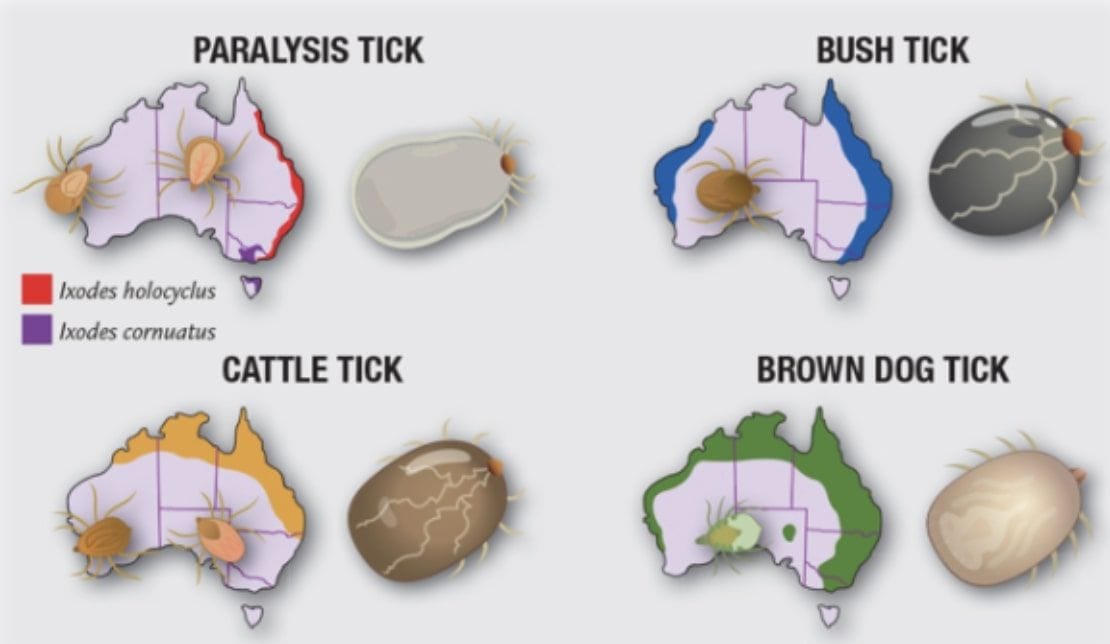Ticks And Your Pets – What You Need To Know
)
There is currently a shortage of tick serum globally so it has never been more important to ensure your pet is kept up to date with their tick prevention.
What are ticks?
Ticks are parasitic arachnids that feed on bloodmeal from their host. They are often found on the face, legs, armpits and belly of affected dogs and cats. They range from 3-5mm in size but can grow much larger when fully engorged from feeding.
The most significant species of tick for dogs and cats are the brown dog tick, bush tick and the most dangerous – the paralysis tick.
What do they cause?
Ticks produce toxins in their salivary glands that can cause local irritation to the skin, papular dermatitis, and usually some level of itchiness.
Animals that are heavily infested may become anaemic.
Tick paralysis
If a dog or cat is infested by paralysis tick, they often show signs of hindlimb paresis and audible hints of respiratory distress.
If untreated, this will lead to flaccid paralysis and symptoms such as reduced gag and swallowing reflexes, and dilated pupils. In dogs, regurgitation and vomiting can also occur due to these reduced reflexes.
When is tick season?
As ticks require warmth and humidity, it is during October to March in Australia when they are most active. The paralysis tick is prevalent along the eastern coast of Australia, while the bush tick and brown dog tick range much deeper inland.

Source: RSPCA
Where do they inhabit?
Ticks usually attach themselves to native wildlife in bushland areas, so this is also where most pets can become affected and become incidental hosts.
How do you protect your pet?
The best way to protect pets from ticks is to stay up to date with tick prevention. Products such as chews, tick collars, sprays and spot-on treatments are recommended. If you are unsure of what tick prevention is right for your pet you can contact us.
Regardless, regularly checking if there are attached or engorged ticks on pets is highly recommended as product failure can occur.
It will also be helpful to avoid bushland areas especially during tick season, and where feasible, environmental acaricides may be necessary for kennels and pens.
What do you do if you find a tick?
If your pet is showing signs of tick paralysis, it needs to be taken to an emergency vet immediately for tick anti-serum treatment and supportive therapy to flush the toxins. The ticks will all need to be thoroughly removed, their toxins neutralised, and the dog or cat be put in care until it fully recovers.
If left unnoticed for too long your pets respiratory system can become paralysed resulting in them needing to be ventilated. This can cost upwards of thousands per day in a referral hospital. So as always, prevention is better than a cure!
If you have any queries, speak to one of our veterinary professionals to know what the best step for you is.
)







